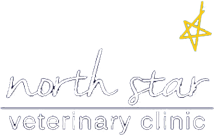Library
-
By-products are ingredients commonly found in commercial pet foods and are considered highly desirable by many human cultures. However, there is ambiguity surrounding this term and misperceptions related to overall nutritional value. This article reviews the formal definition of by-products in the pet food industry and highlights the nutritional and environmental benefits they provide.
-
Corn and grain have been included in commercial pet foods for many years. Recently, however, these ingredients have been portrayed in the media as "fillers" that provide little nutritional value to pet foods. Conversely, corn and grain provide a wide range of essential nutrients that support the health of both dogs and cats. This article explores this topic with reference to specific nutritional benefits.
-
Because of differences in large and giant dogs' energy and nutrient needs, some pet foods are specifically formulated for these requirements. Adequate diet and feeding management are important for adequate growth and preventing orthopedic problems and gastric dilatation-volvulus (GDV) or bloat. Specific recommendations are included for selecting an appropriate diet for a large or giant breed dog. Feeding management recommendations are also included.
-
Because of differences in toy and small dogs' energy needs and size, it is essential to use pet foods specifically formulated for their requirements. Adequate diet and feeding management are important for proper growth and preventing excessive weight gain. Specific recommendations are included to select an appropriate diet. Feeding management recommendations for puppies and adult dogs are also included.
-
It is important to understand the unique nutritional needs of performance dogs. Their success depends upon a combination of genetics, training, and nutrition. It is important to match the nutrient profile to the individual dog and the activity. Your veterinarian can assist you in making optimal nutritional choices for your canine athlete.
-
Bladder stones can be a significant problem for dogs. Bladder stones set the stage for chronic urinary tract infection, and some bladder stones (struvites) grow more quickly if the dog already has a urinary tract infection. Diet selection can play a role, and it is important to follow your veterinarian’s recommendations to prevent recurrence.
-
In North America, obesity is the most common preventable disease in cats and is one of the most common overall. Almost 60% of domestic cats are overweight. Scientific evidence now reveals that fat tissue is biologically active; it secretes inflammatory hormones and creates oxidative stress on the body's tissues, both of which contribute to many diseases and a decreased quality of life. Treating obesity as a chronic, low-level inflammatory condition is the new approach.
-
In North America, obesity is the most common preventable disease in dogs. Almost 50% of domestic dogs are overweight. Scientific evidence now reveals that fat tissue is biologically active; it secretes inflammatory hormones and creates oxidative stress on the body's tissues, both of which contribute to many diseases and decreased quality of life. Treating obesity as a chronic, low-level inflammatory condition is the new approach.
-
Obesity is the most common problem in cats in North America and leads to an increased risk of diabetes mellitus, heart disease, and several types of cancer. Extra body fat causes increased inflammation associated with osteoarthritis. Reducing inflammation and pain can help an overweight cat to regain activity, which in turn can lead to more appropriate weight loss. Obesity can be prevented or reversed when cat owners are aware of calorie intake, body condition, and improving movement or activity.
-
Obesity is a common problem in cats. It results from too many calories being eaten and not enough calories being burned. Extra body fat causes increased inflammation in the body, worsening osteoarthritis and joint disease. To prevent your cat from becoming obese, speak to your veterinarian about your cat’s calorie needs and an appropriate food for your cat's life stage. Increasing your cat's daily activity can help prevent or reverse obesity. Be aware of your cat's body condition and keep track of her weight.


